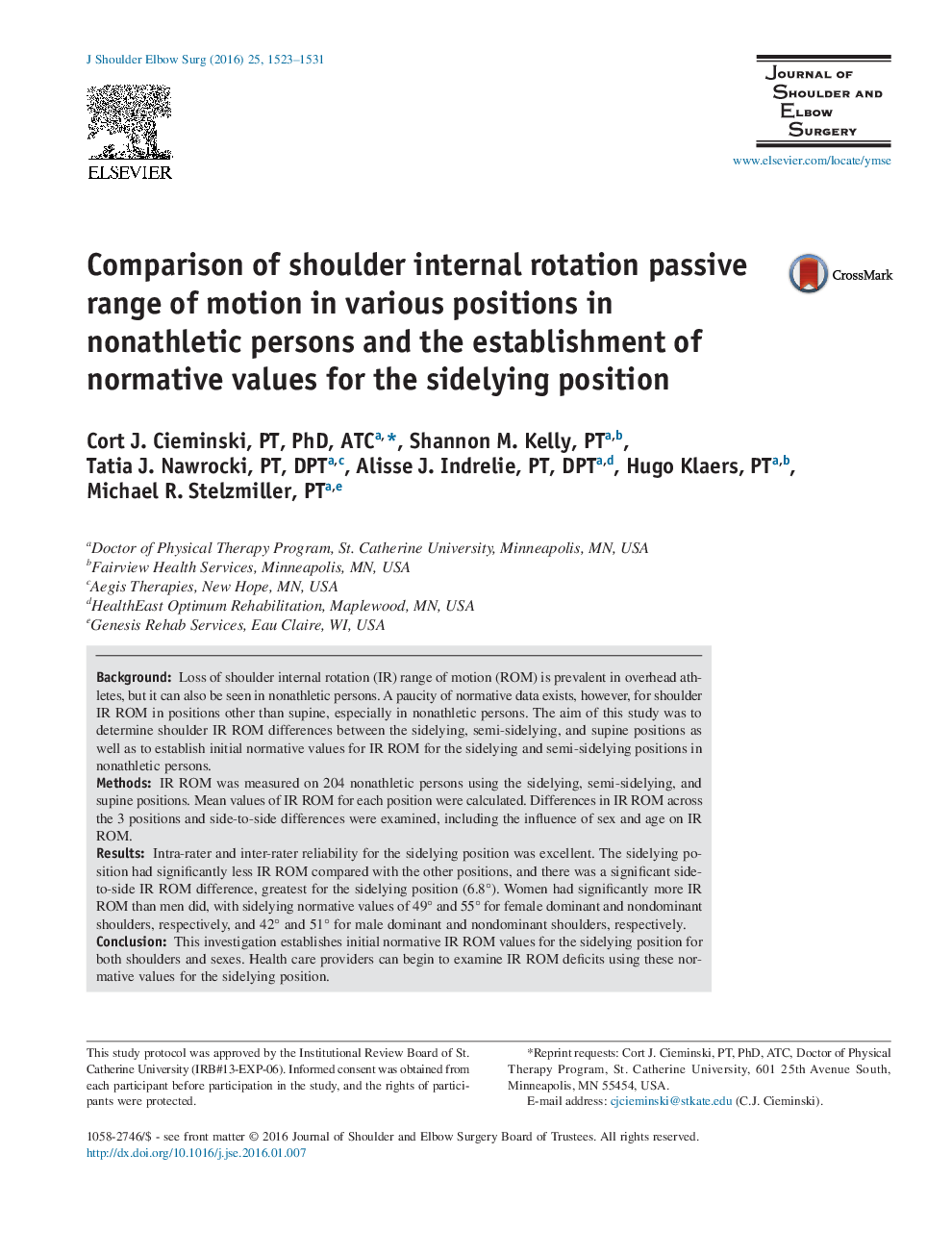| Article ID | Journal | Published Year | Pages | File Type |
|---|---|---|---|---|
| 4072847 | Journal of Shoulder and Elbow Surgery | 2016 | 9 Pages |
BackgroundLoss of shoulder internal rotation (IR) range of motion (ROM) is prevalent in overhead athletes, but it can also be seen in nonathletic persons. A paucity of normative data exists, however, for shoulder IR ROM in positions other than supine, especially in nonathletic persons. The aim of this study was to determine shoulder IR ROM differences between the sidelying, semi-sidelying, and supine positions as well as to establish initial normative values for IR ROM for the sidelying and semi-sidelying positions in nonathletic persons.MethodsIR ROM was measured on 204 nonathletic persons using the sidelying, semi-sidelying, and supine positions. Mean values of IR ROM for each position were calculated. Differences in IR ROM across the 3 positions and side-to-side differences were examined, including the influence of sex and age on IR ROM.ResultsIntra-rater and inter-rater reliability for the sidelying position was excellent. The sidelying position had significantly less IR ROM compared with the other positions, and there was a significant side-to-side IR ROM difference, greatest for the sidelying position (6.8°). Women had significantly more IR ROM than men did, with sidelying normative values of 49° and 55° for female dominant and nondominant shoulders, respectively, and 42° and 51° for male dominant and nondominant shoulders, respectively.ConclusionThis investigation establishes initial normative IR ROM values for the sidelying position for both shoulders and sexes. Health care providers can begin to examine IR ROM deficits using these normative values for the sidelying position.
